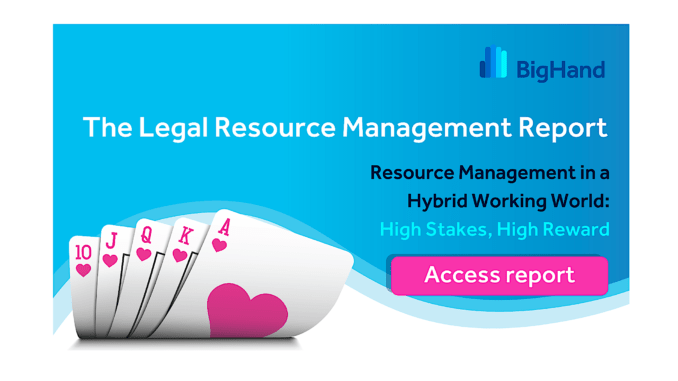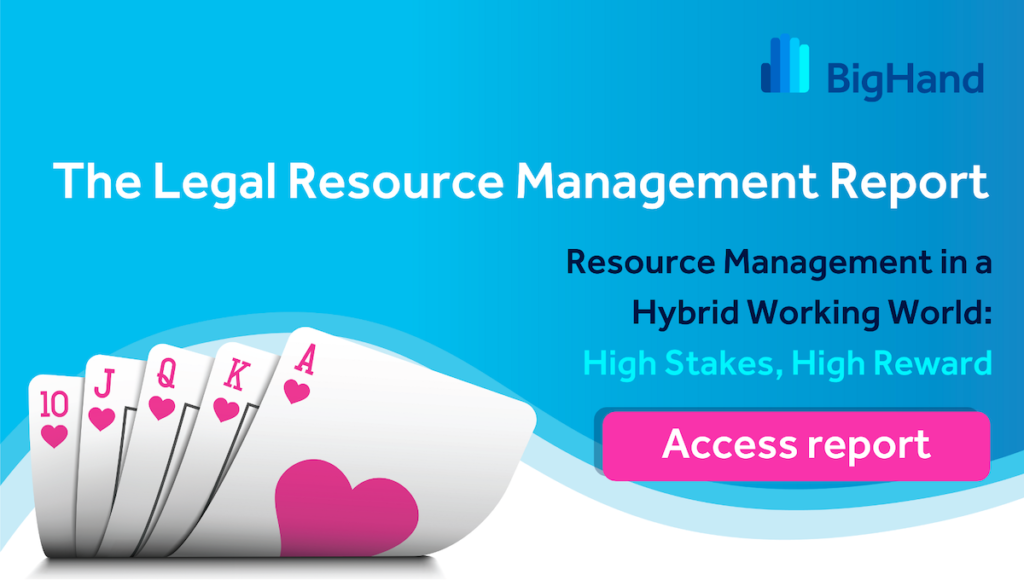
BigHand has published follow-up findings to our recent Legal Workflow Management Report, based on data gathered from over 900 law firm respondents globally, and focused on the latest trends in lawyer-to-lawyer work allocation and matter staffing.
From the adoption of hybrid working, to associate career development, and the increased focus on Diversity, Equity and Inclusion, to staffing matters with profitability in mind – our latest report is an accurate view of the state of work allocation and matter staffing in the legal industry today.
What’s clear is that firms recognise both the challenges and opportunities associated with effective work allocation in 2021 and beyond.
Data Visibility
A key section of our report reveals that one of the biggest challenges still facing firms is their lack of actionable data. One of the critical gaps is the lack of information about work allocated and the capacity / utilisation of staff: only two in five firms have information about the work allocated from partners to associates.
For many firms the information is not provided in real time – the manual data collection process is often inconsistent, leading to delays and potential inaccuracies that compromise both confidence in the data and individuals’ ability to make fast, informed decisions.
In addition, the lack of capacity information makes it hard to optimise turnaround times and ensure the right resource is allocated to the most appropriate work: just 46% of NA (North American) and 38% of UK firms have data regarding capacity or utilisation of partners or associates and only 40% of NA and 36% of UK firms have visibility of the different skillsets of each associate.
Without this data any attempts to improve matter profitability is constrained – work cannot be allocated to the optimal resource, affecting client output and relationships and, inevitably, profitability.
52% of NA and 48% of UK firms have access to data about how matters are resourced based on DEI requirements, but arguably that is backward-looking data based on historical billable hours, not forward-looking data based on skills and availability.
Additionally, only 47% in NA, and 43% in the UK can see skill enhancing opportunities available for associate career development – undermining any drive to improve equitable resource allocation to support the goals of individuals and their development into better lawyers.
The more information a firm has about capacity, talents, experience, and development expectations, the more intelligent and effective the resource allocation process.

Operationalising Resource Management
As firms look to fast track their adoption of operationalised resource management, there is growing investment in people, process and technology: on average, 78% of firms globally are prioritising the implementation of Resource Management technology over the next 24 months.
Resource Management software can provide firms with a single source of information, from lawyer skill sets, experience, interests and capacity to real-time visibility of the current workload for individuals and teams. Resource Managers can use powerful search tools to find the right individual for each matter, even post requests for individuals while requesting specific skills and experience.
Positively, the majority of firms now have dedicated people (82% NA, 71% UK) and dedicated processes (84% NA, 78% UK) in place to effectively resource matters. Creating dedicated resource management people, supported by excellent, firm-wide processes is a fantastic start but firms also need the right technology to truly transform resource management and address the challenges highlighted in this report – from profitability and client relationships to DEI.
The operational and strategic need to achieve more effective resource management is driving change at an unprecedented pace. Firms are introducing people, process and technology to support effective resource management.
This has become a top priority – with the vast majority of firms globally acting now and embarking upon strategic resource management projects that will transform the way resources are allocated and managed over the next 24 months, driving new levels of profitability in a highly competitive legal market.
Access the full report here.

[ Artificial Lawyer is proud to bring you this sponsored article by BigHand. ]